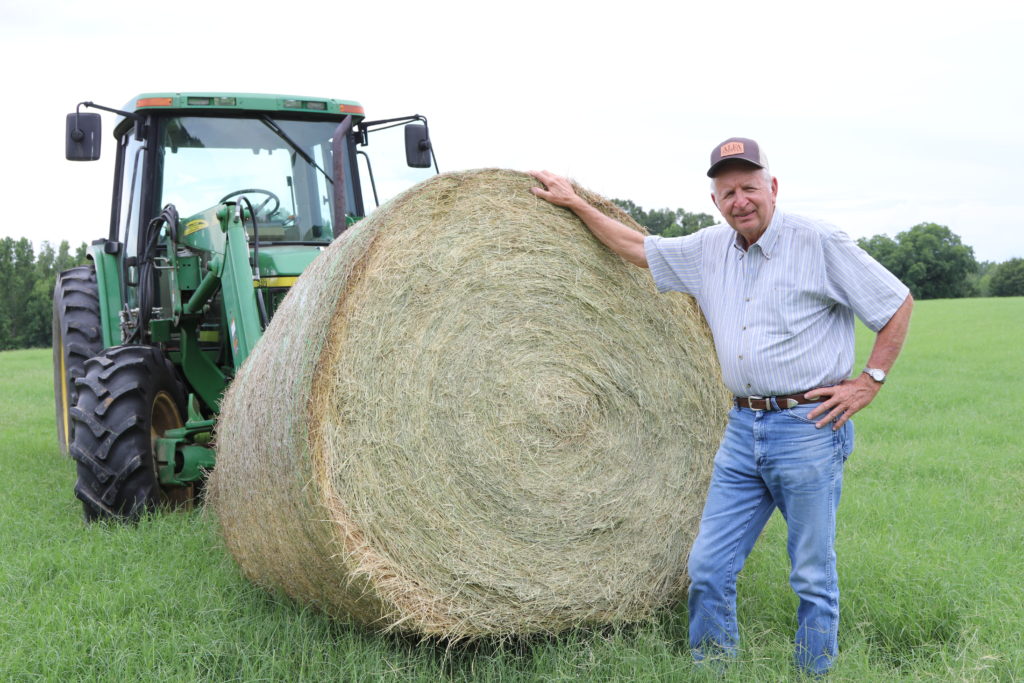Growing Gold: Hay Producers Battle Big Bills

By Josie Chance
Feed, fuel and fertilizer.
The three “Fs” of farming are requiring hay producers to be creative this year as they combat problems beyond drought or insect pressure, said Mahlon Richburg as he walked through his Lee County field of lush green Bermudagrass.
“We are going to have to be smarter and find ways to deal with long-term supply chain issues,” said the Alabama Farmers Federation State Hay & Forage Committee member. “Just because we have done something one way for the past 40 years doesn’t mean we should continue.”
With the U.S. Department of Agriculture estimating a 34% increase in the cost of lubricant, fuel and electricity compared to last year, producers are increasing end-product prices while reevaluating costs and discovering ways to control expenses.
Richburg has focused on improving soil and plant efficiency by using several new weed suppressants and methods of fertilizer application. He said research and development are crucial, but each producer needs to find what works for their operation.
DeKalb County cattle and hay farmer Thomas Ridgeway puts this into practice through conservation techniques and careful business decisions to keep costs low, despite a necessary 30% hay price increase and no profit change over 2021.
“Soil testing comes first,” Ridgeway said. “I don’t want to put out anything the land doesn’t need, so testing and applying fertilizer accordingly decreases the amount needed.”
Improved production efficiency was evident once he began using more machinery and technology. Ridgeway said some of those decisions, such as purchasing an accumulator, were necessary after he was unable to find labor to move bales.
“I couldn’t find people willing to work without breaking the bank,” said Ridgeway, a DeKalb County Farmers Federation board member. “I turned to investing in equipment that allowed me to do more by myself. It has definitely paid for itself in the long run.”
He has also adapted his end products as the market changed. Previously, Circle R Farms offered mulch hay for construction use, but as demand for those square bales decreased, he changed gears to grow more Bermudagrass hay for livestock producers.
Back in Auburn, Richburg said a bale’s value goes far beyond its weight. He’s determined to provide the quality product his customers expect.
“We fertilize regularly, regardless of how the grass looks,” Richburg said. “We also never sell bales that have been rained on.”
Ridgeway echoed Richburg’s remarks.
“My customers have been very understanding about the cost increase,” Ridgeway said. “They are experiencing supply problems as well and know getting quality forage is worth the expense.”
This reputation for a first-rate product keeps both farmers busy with repeat customers. The farmers said word-of-mouth fulfills marketing needs, so they’re never short on buyers, despite only offering pickup because of limiting factors, such as time, labor, fuel and liability.
“If I am making a delivery but blow a trailer tire on the way, I lose my profit for that load, plus time and energy,” Ridgeway said.
Despite current challenges, Richburg reminds farmers to remember the big picture — growing quality hay to help livestock pack on pounds.
“We have to live with these issues,” he said. “But we also must sharpen our management skills and do better than we have in the past.”
